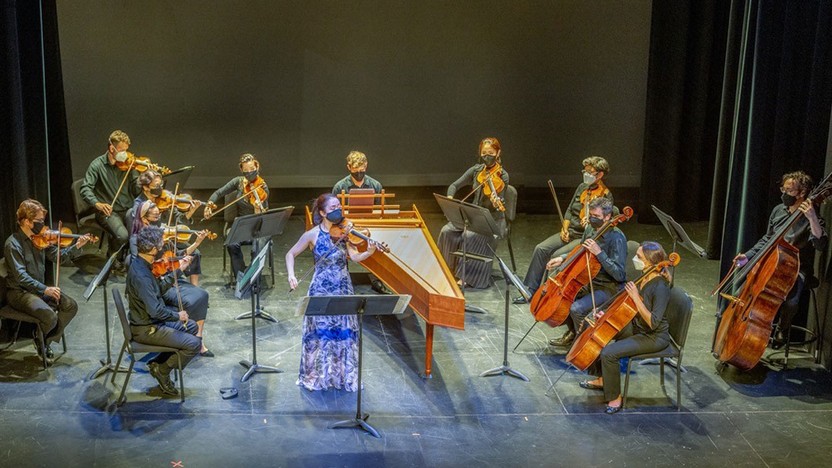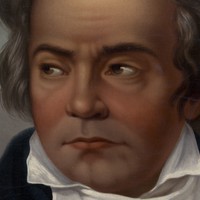Beethoven, Coleman and Ibert


Jacques Ibert studied at the Paris Conservatory in the years before World War I, in a cohort that also included Honegger and Milhaud, two future members of the group of young French upstarts that a critic dubbed “les Six.” With his breezy style and willingness to buck conventions, Ibert might have been the seventh in that clique if he hadn’t been away from Paris when they were anointed in 1920, having won the prestigious Rome Prize on his first try in 1919.
Ibert composed these Three Short Pieces for wind quintet in 1930 as incidental music for a French adaptation of an Irish play, an origin that leaves its mark in the first movement’s approximation of an Irish reel. The wind quintet was an ideal vehicle for Ibert’s crisp and transparent neoclassical language, and as he showed in the second of these pieces, even two instruments were enough to maintain a luminous texture. After a slow introduction with a hint of jazz in its harmony, the third piece filtered Mozartean charm through a cheeky, modern lens.
Aaron Grad ©2025

Shot Gun houses (or rather 'Railroad Style' as referred to in northern states), are a symbol of poverty in the South and are still prevalent in African American neighborhoods. These houses earned their nickname from the saying that one could shoot clearly through an entire house from a window with a shot gun! Like Muhammad Ali, I grew up in this style of home, in the same area of town known as West Louisville in Kentucky. When the rate of elevated murders, gangs and drugs excalated to the point that the Kentucky government labeled the area a ‘war zone,’ something special occurred in that moment when Ali came home for the very last time to be buried. The respect and admiration he commanded from the community gave way to three solid weeks of peace without a single murder.
In a collaboration between composer Valerie Coleman, Harlem String Quartet and clarinetist David Shifrin, SHOT GUN HOUSES (SGH) will be a 20-25 minute cross-disciplined tribute to Muhammad Ali for live performance partnered with visual art. The performance itself will entail vintage photographs of Muhammad Ali’s career, taken by photographer (and maternal grandfather of Harlem String Quartet’s own Melissa White) Thomas Washington, alternating with photographs of artwork from Ali’s father. Although I never met him, Mr. Cassius Clay Sr. was known by my parents and beloved by many as a fixture to the fabric and heart of a community. His painted storefront billboards and signs represented a time when successful African American-owned businesses in the West End were commonplace. His art was a visual backbone to the West End’s cultural landscape, inspiring many young people to be active in visual arts before he passed.
Significant moments and places in Muhammad Ali’s life will title the movements: his home on GRAND AVENUE and its row of SHOT GUN HOUSES, Mr. Cassius Clay, Sr.’s contributions to the PROSPERITY of locally owned businesses, the legend surrounding Ali’s Gold medal from the ROME 1960 Olympics (which may or may not be at the bottom of the Ohio River), a rhythmic LOUISVILLE LIP inner movement (in Scherzo form) and a Finale based on his courage to speak and live UNBOUND by racial constraints.
SGH will be a legacy piece that sends a timely message of solidarity, by informing us of Ali’s work as a global citizen. The creative process will be influenced by three other important sources:
Stories and remembrances from Harlem String Quartet’s violinist Melissa White and her family, who had a special relationship with Ali and his family. From Melissa White of Harlem String Quartet: “my maternal grandfather was a photographer and photographed Muhammed Ali. His pictures were recently donated to the Museum by my family. They were also friends with the Ali's; Muhammed took my mom around London when she was there for school and he happened to be in town for a visit. The stories go on and on ...”.
Ali’s physical and verbal actions: a vibrant collection of rhythms and musical motifs, extracted from his speech patterns and boxing movements.
His more sacred and quietly profound moments. Melodious simplicity alternating with tonal shifts flow from somber moments of his experiences as both father and humanitarian. As all areas in his life were galvanized through his Muslim faith, I plan to infuse these moments with Arabic Maqam, a set of scales that is the backbone of Middle Eastern music.
The work is much more substantial than telling a biography of a champion and his father; it is a conceptual offering to what a community and nation can be through social responsibility, deep respect and fellowship.
Valerie Coleman ©2019

When the 21-year-old Ludwig van Beethoven arrived in Vienna in 1792, Wolfgang Amadeus Mozart had been dead less than a year, and Joseph Haydn — with whom Beethoven studied briefly — was in his prime. Under their long shadows, Beethoven spent his first years in Vienna mastering the “Classical” style, meanwhile earning a reputation as the city’s ranking keyboard virtuoso.
The first years of the new century were a turning point for Beethoven. Publicly, he was on top of the world; no longer seen as just a pianist who also composed, he published his first symphony and string quartets in 1801, and he was writing an important ballet after being recommended by the Empress. But privately, Beethoven was coming to terms with an inescapable tragedy: He was going deaf.
Even if the music composed in 1801 showed no obvious signs of Beethoven’s tormented state, it initiated a process of change that ultimately ushered in his “middle period.” It was during this transitional phase that Beethoven wrote the only String Quintet he conceived expressly for that ensemble (as opposed to several others arranged from existing music), a work that built on the success of his first six string quartets while testing new approaches to form and harmony.
Underneath the charming themes and placid textures of the first movement, its harmonic scheme exploits a move to the “wrong” key, contrasting the home key of C-major with the unexpected destination of A-major. The slow second movement, by contrast, looks back toward Mozart, with a singing quality that became less overt in Beethoven’s later years.
The Scherzo, tumbling obsessively through permutations of its three-note motive, is perhaps the clearest preview of the sound Beethoven perfected in “middle period” works like the Fifth Symphony. The quirky and highly operatic finale — beginning with gusty tremolos that prompted this quintet to be nicknamed “The Storm” — once again emphasizes the foreign key of A-major, heard during the first of two interruptions marked Andante con moto e scherzoso.
Aaron Grad ©2025
Get driving directions and find nearby parking.
Find dining options close to the venue.
View seating charts to find out where you'll be seating.
SPCO concerts are made possible by audience contributions.
For exclusive discounts, behind-the-scenes info, and more:
Sign up for our email club!
